A Collection of interesting and varied images from around the world (and a few words too)
Don't wanna be here? Send us removal request.
Text
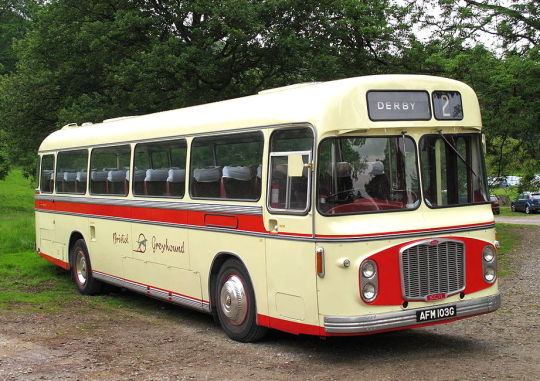
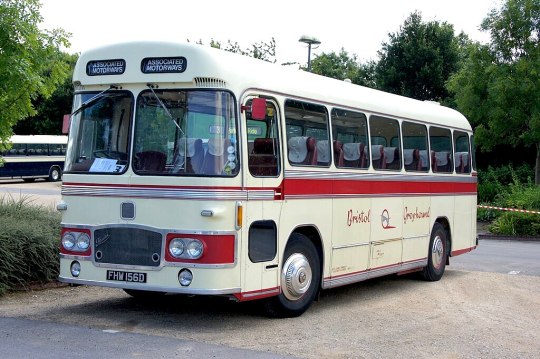
Bristol Greyhound Express Bus Services (UK) Model REHL
The Bristol Greyhound bus service, originally operated by Greyhound Motors, was a pioneering long-distance coach service between Bristol and London launched in 1925. It was notable for being the first express coach service between the two cities and for allowing passengers to board and alight at any point along the route. New Routes were added later across the UK. The service, which later became part of National Express, is celebrating its 100th anniversary in 2025. The vehicles illustrated had Rear mounted underfloor 6-Cylinder diesel engines rated at 7.5L 184Bhp
In 1928, Greyhound Motors was acquired by Bristol Tramways, but it continued to operate as a separate entity until 1936. The Greyhound name and logo were used by Bristol Omnibus Company until 1972, when the service was rebranded as National Express.
While the original Greyhound Motors service is now part of National Express, FirstGroup, which acquired the American Greyhound Lines, also uses the Greyhound name and logo in the UK.
The images shown are of vehicles built in the 1960's
4 notes
·
View notes
Text
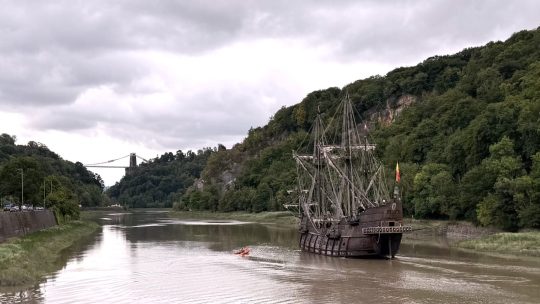
Bristol UK
The Spanish Galleon Andalucia sailing up the River Avon on the high tide, when she passed underneath the Clifton Suspension Bridge she fired her cannon to mark her arrival in style.
For the duration of the 2025 Harbour Festival and until July 27, the replica of the 17th century ship will be moored outside the Arnolfini Art Gallery welcoming visitors on board.
1 note
·
View note
Text
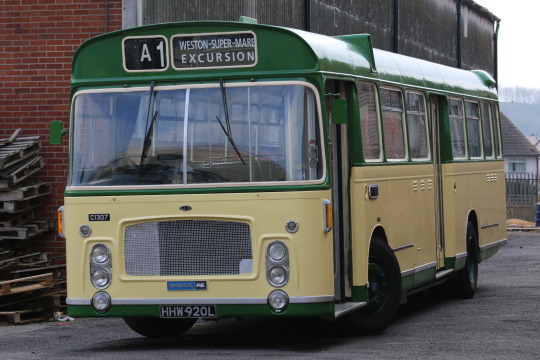
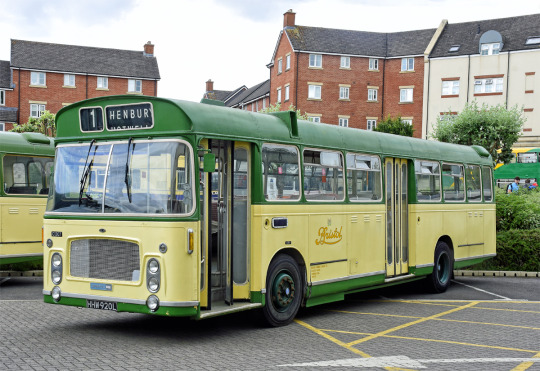
Bristol RELL6L Rear Engine Single Deck with ECW Bodywork
The Bristol Omnibus Company RE (Rear Engine) range of vehicles were produced from 1962 till 1982 they were fitted with a Gardner or Leyland 6-Cylinder 6.0L 120 or 184 Bhp Diesel engine mounted horizontally underfloor in the rear of the vehicle driving the rear wheels. This design was one of the best first generation rear engine buses to be built...
#Bristol Bus Co#Bus#Bristol RELL6L#Single Deck Bus#UK#Gardner Engine#Leyland Engine#Rear Engine#Public Transport
5 notes
·
View notes
Text
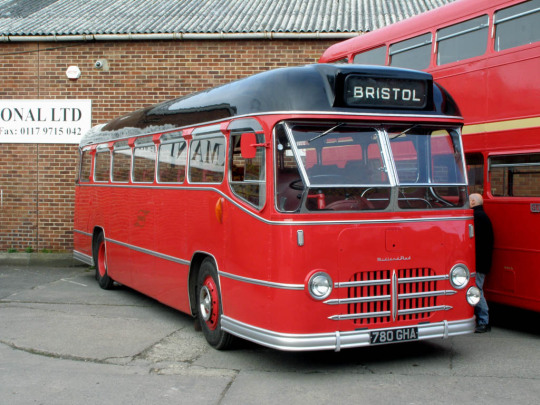
Destination Bristol - Midland Red CM5/CM5T - Coach
Built by BMMO (Birmingham Midland Motor Omnibus) in service between 1959 and 1971 the famous CM5 had an 8.0L Six-Cylinder BMMO Engine with a 5-Speed overdrive gearbox and could reach 85mph... (Midland Red Service Brand Name) This service was used on express routes across the England
19 notes
·
View notes
Text
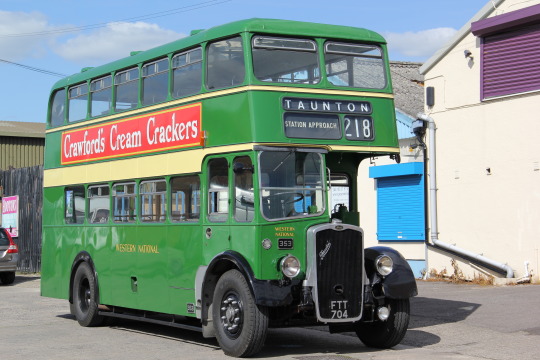
1945 Bristol Low Roof K6A Double Deck Bus
The low roof design was achieved by using 4 seat bench seats across the top deck from the left hand side and installing a lowered walkway from the top of the stairs (like a channel or trough) with notices on the back of the right hand lower deck seats reminding passengers to mind their heads when leaving their seats. This model bus was powered by an AEC 6-Cylinder 7.0L Diesel Engine. Low roof buses were necessary on some routes where low bridges were to be encountered...
6 notes
·
View notes
Text
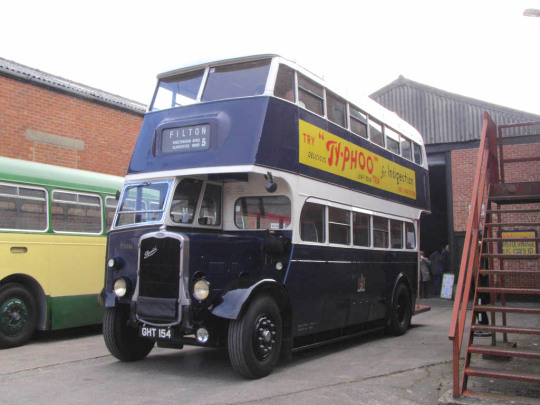
1940 Bristol K5G Bus (Very Rare Vehicle)
The bus was one of 271 buses supplied to Bristol Tramways and Carriage Co. Ltd. during 1938-1941 to replace Bristol’s trams. It was allocated mainly to Lawrence Hill depot, and was withdrawn in 1953. This bus and others like it were built in Bristol at the Brislington Body Works (Now Closed)
It was sold to Joe Brewer, a travelling showman, who converted it in 1954 to a van, removing the stairs, and lowering the roof to the upper deck windowsill level. He had a small living section at the front and also fitted a second gearbox and generator for producing the electricity used by his arcade. He used the vehicle in this form to carry slot machines and the associated arcade. It continued in this condition for 18 years operating from Mr Brewer’s base at Crediton.
It was purchased by the Bristol Vintage Bus Group in May 1973 with a view to reconstruction back to its original condition. A body of a similar vehicle, GHT 141, was in use as a store shed by Malpas of Bristol, a building contractor at Oldbury Court, and this was purchased in May 1973 to provide the parts required for this mammoth project which took 8 years to complete. Seats were acquired from a sports pavilion in Clevedon. This bus is now fully restored to operational condition and and is seen in it's original Bristol Blue and White livery. It is driven by a Gardner 5-Cylinder 7.0L Diesel engine
7 notes
·
View notes
Text
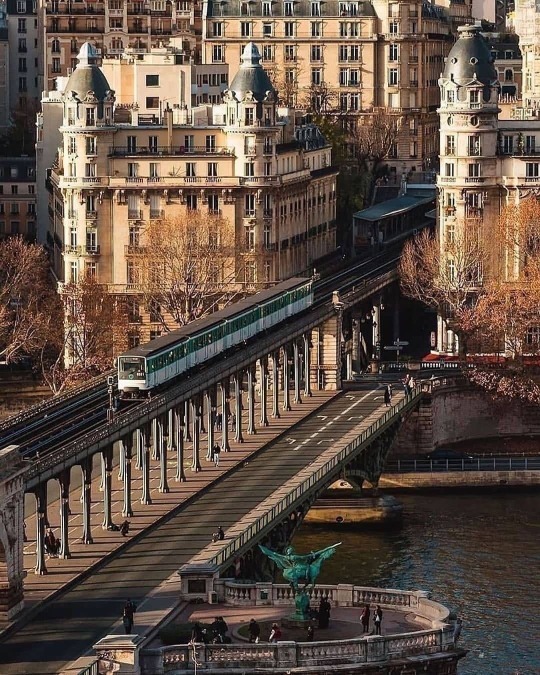
Paris - Le Pont de Bir-Hakeim
The Pont de Bir-Hakeim — named after the 1942 battle in Libya; formerly the Pont de Passy , (the Bridge of Passy), until 1948 — is a steel open spandreldeck arch bridge on stone masonry starlings, which crosses the River Seine in Paris. It connects the 15th and 16th arrondissements, passing over the north-east end of the Île aux Cygnes, (the Isle of the Swans). The bridge, made of steel, was constructed between 1903 and 1905, in replacement of a footbridge that had been erected in 1878. The bridge has two levels: one for motor vehicles and pedestrians, the other being a rail viaduct (the Viaduc de Passy) built above the first one, through which passes Line 6 of the Paris Métro. The bridge is 237 metres (778 ft) long and 24.7 metres (81 ft) wide.
1 note
·
View note
Text
Enough to melt your soul...(sole)
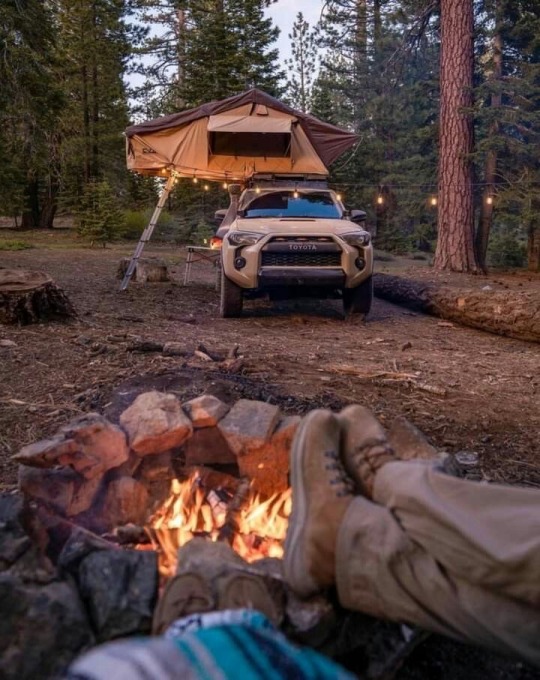
195 notes
·
View notes
Text
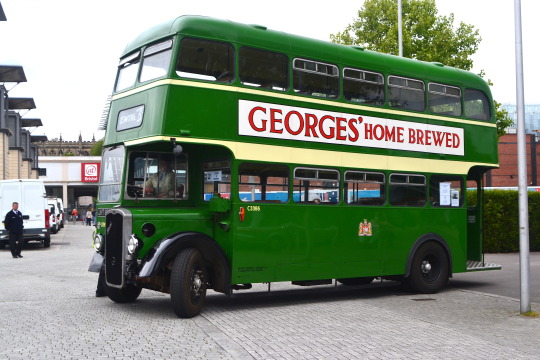
1946 Bristol K6A Double Deck Bus
1946 Bristol K6A double deck bus seen here in Bristol Livery with the city coat of arms, these vehicles were fitted with the 5-Cylinder Gardner Diesel 94hp 7.0L Engine - These buses ran on routes all across the city and to outlying towns and villages across Somerset Wiltshire and Gloucestershire. They were also used by several other bus operators throughout the country. The Image is of a fully preserved vehicle.
This one advertising the Georges Brewery Bristol, which was in the city centre adjacent to Bristol Bridge, when brewing was in operation the strong odour of the brewing process could be smelt for quite some distance from the brewery. The brewery has since been closed and the buildings converted into loft style apartments...
27 notes
·
View notes
Text
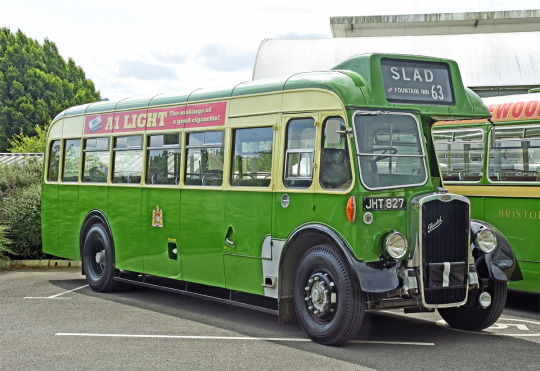
1946 Bristol Omnibus L5G
1946 Bristol L5G single deck Bus seen here in Bristol Livery with the city coat of arms, these vehicles were fitted with the 5-Cylinder Gardner Diesel 94hp 7.0L Engine - These buses ran on routes all across the city and to outlying towns and villages across Somerset Wiltshire and Gloucestershire. They were also used by several other bus operators throughout the country. The Image is of a fully preserved vehicle...
44 notes
·
View notes
Text
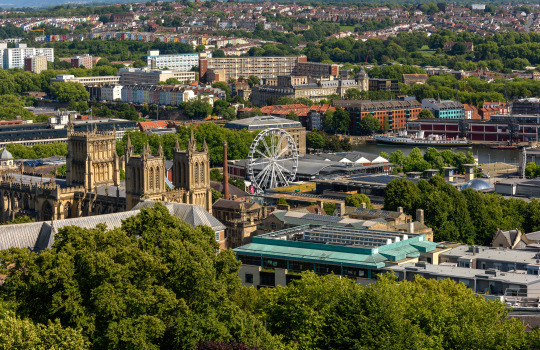
Bristol UK - Across the City
View overlooking parts of the city from The Cabot Tower on Brandon Hill - taken by Bristol street photographer Martin Hewer
11 notes
·
View notes
Text

Memories from a Box
A set of memories within two broken covers Cathedral towers in black and white Cast iron symbol of a proud nation White stone church on highest hill Glass covered pleasure as views glide by Artists at work under shady trees Cobbles underfoot in a textured square
The dome of a hero above a granite tomb A triumphal arch, and a grand avenue Expo architecture, symmetry in stone An old friend, probably a flame A house in a suburb a garden to tame Grand images of the city at night Alive and with moving lines of light
A Collection of friends, now forgotten Different journeys paths that part Famous bridges over a rivers ring Views from a hotel window and different string Art card postcards to make you think Sepia photos of a place once loved Famous rock stars their tracks recalled A pebble beach is not ignored A school photo in gold trim frame VW camper van broken down again
Stark picture of a 60’s tower, A crane against a cloudy sky Silhouette, a winter tree on a lonely hill An abstract of the nails spill A group of boys before the race Two swans swimming on a silken lake The 'Underground' sign on a London street The expedition to Snowdon a photo to keep
A picture of a stone built abbey There the very first photograph taken And a double exposure of a very close friend Still life images of oil lamp and pans Together with the mechanism of a mantle clock A wheeled waste bin atop a grid A spider’s web outlined in frost And a foggy day at the rivers edge The Ball and chain from an industrial crane
A certificate won for playing the trumpet A close up of an old door latch A very old barn without its thatch A fish eye view to distort the street A fallen tree across the creek The casting shadow as the sun goes down Runner’s legs in a lens shown round A Lake in winter cold and still Flotsam at the waters edge Pupil in shorts and a rugby shirt
A fox in close up on a local lawn Ventilator grids shown at dawn Helicopter hovers overhead Tudor chimneys stand into the sky Steel stairs fixed, black paint and rusting Sculpture of a horse’s head And a street scene in black and white Pleasant view of a famous hill Across a low stone wall close to home A planet like view of an office space The face of a youth in a very black place The athletes preparing for the race And a boy shown running to keep the pace
The way to the mountain a wide-open place A solitary lake on the steep hillside An old stone arch with crumbling door A leaded lantern fixed to the wall Waterproof cover to watch the waters fall A window latch in shadow against a clapboard house A sash window set in an old brick wall Dappled shade before the autumn fall And a road sign showing ‘Highway 61’ Sadly for him this is ‘No Direction Home’
Poem: Richard Walker 12 Dec 2008
Note: These lines describe photographs taken as they came out from an old box file that belonged to my late son, many of the pictures taken by him, and a few of my own from my youth. An interesting miscellany of images with a few verbal twists of my own! The picture is of that actual box file although the contents have since been resorted. I guess many of us will have a box like this one and I thought it would be good to write just a line or two to represent each photo it contained.
4 notes
·
View notes
Text
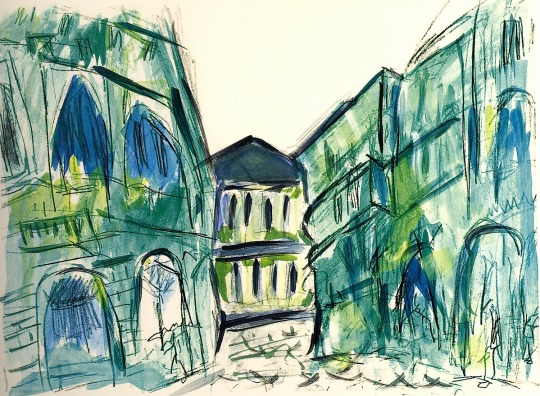
Serve Somebody...
What did I say to everyone that caused them all to run? Did they not understand my meaning of fun? Would they understand what I said, if I was holding a gun? Well I am gonna make chase, cause I wont be outdone.
What was it I said that caused you to shake your head? What was it I said that caused you to stay lying in your bed? Why did you look at me that way? So much as to say, you’re weird! And why is it that you hide behind that beard?
Maybe its as I feared, cause they’ve all disappeared. Gone running away to a place far, far away. Where they can regroup, and count all the loot Feeling very pleased with them-selves to boot!
What must I say now that will bring them back to the plough? And be happy with the offer, cause that’s all I can allow, Make them give up the plenty, and accept the crust, But it’s going to be hard to win everyone’s trust.
They are all on the edge, Oh yes that I can see! They are not sure whether it’s for them, or just for me. What do they get out of this scheme? They are just not seeing beyond their own dream.
What must I now do to make them take on a review? Should I offer a daily intake, with clause for a rebate? Or just let them stay in that place far away? Let this motley crew sink in their own stew, after all they want it their way!
No, I can’t do that; I’ll just have to agree to take them all back, Just make sure I get it right, that they don’t get a fright, But I must insist that its ‘I’ who am revered And there’s just no way that ‘my’ name is to be smeared.
Poem: Richard Walker 25 October 2006
Note:, In that great Bob Dylan song “Gotta Serve Somebody” it talks about us having to be in the service of someone, God, Satan, whoever, whatever. In my lines that “Someone” seems to be getting rather annoyed at those who should serve him, and is having a difficult time trying to gather his flock, getting them all back ‘on side’ I suppose it about Power in the end like almost everything else these days…..
Image: "Brussels" by Bob Dylan from the "Drawn Blank" series (It has the look of a crazy church building so I thought it was appropriate) If you are a Bob Dylan fan then you must buy this book of his paintings they are really very special. ISBN 976-3-7913-3943-6
4 notes
·
View notes
Text
Anarchy is on its way, we don't need to vote for it....!!!

RIP Nick Hedges - Liverpool, Photo by Nick Hedges, 1971
500 notes
·
View notes
Text
Pond Life....!

Marjolein Martinot. Southern France, from her book Riverland
238 notes
·
View notes
Text

Canary Wharf Towers - London - Seen from development site on the south side of the river Thames
3 notes
·
View notes
Text
The neighbours have grown...
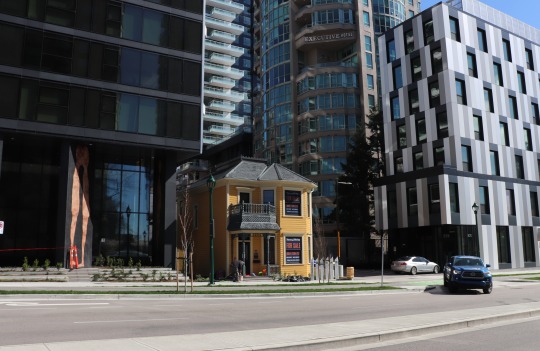
•
69 notes
·
View notes